Key takeaways
- Social justice teaching emphasizes empathy and personal connection, making it essential to create a safe environment for exploring difficult topics.
- Integrating social justice themes into existing curricula encourages critical thinking and helps students relate historical struggles to contemporary issues.
- Engaging students through personal reflection and varied presentation methods fosters deeper understanding and empathy.
- Addressing challenges openly and remaining adaptable is crucial for transformative learning experiences in social justice education.
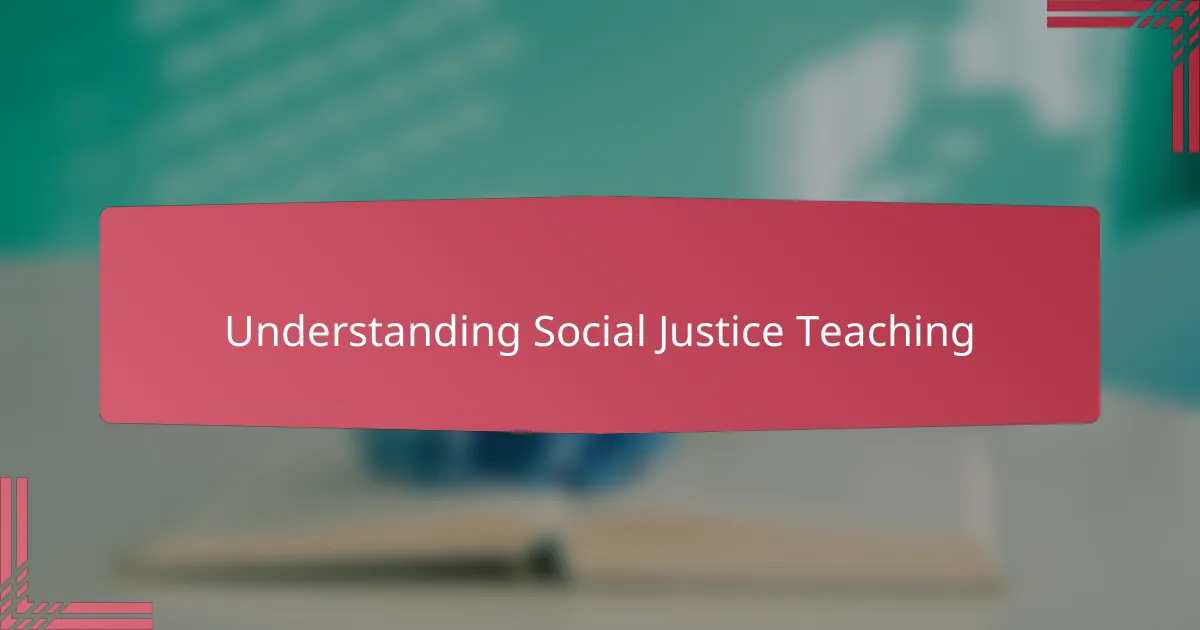
Understanding Social Justice Teaching
For me, understanding social justice teaching means more than just covering topics; it’s about recognizing the lived experiences behind the issues. I often ask myself, how do I create a space where students feel safe to explore difficult questions without fear? This reflection has shaped the way I approach lessons, making empathy a core part of the classroom dynamic.
I remember a moment when a student shared a story about injustice they witnessed at home, which made me realize the weight of these themes in our lives. Teaching social justice isn’t simply about facts; it’s about connecting those facts to real human stories that challenge and inspire. That’s when teaching becomes truly transformative—not just informative.
Is social justice teaching only for certain subjects or students? In my experience, it’s a thread woven into every conversation, no matter the topic. It invites us all to think critically about fairness and power, encouraging learners to envision and work toward a more just world. This perspective has allowed me to see my role as a teacher in a deeper, more purposeful way.
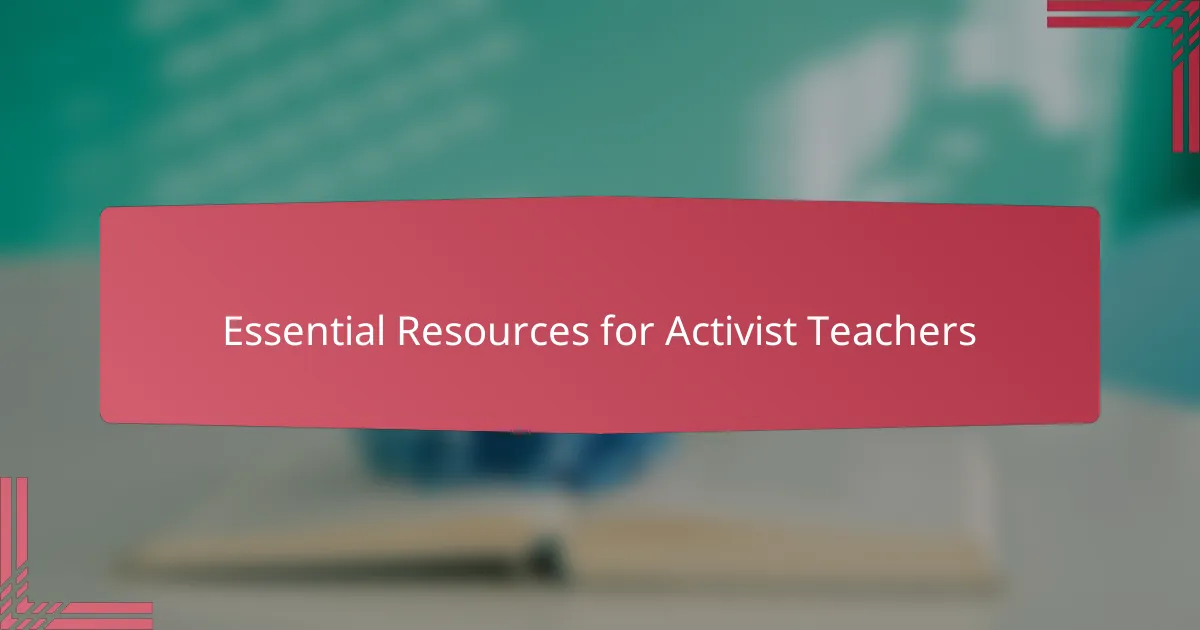
Essential Resources for Activist Teachers
One resource I’ve found indispensable is curated collections of firsthand narratives and testimonials. When I use materials that share authentic voices, it feels like the classroom walls melt away, and students connect on a deeply human level. Isn’t it powerful when a single story can open up an entire discussion on justice and empathy?
Another essential tool has been access to open-source lesson plans and discussion guides tailored for social justice themes. These resources save me time and provide fresh ideas that resonate with diverse learners. Have you ever faced the challenge of finding material that balances educational rigor with emotional sensitivity? These guides have been my go-to solution.
Lastly, I can’t overstate the value of community forums and networks for activist teachers. Sharing experiences, challenges, and successes with others who care deeply about social justice has been incredibly affirming. It makes me wonder—how much stronger could we all be if we leaned on each other more often? For me, this sense of solidarity fuels continued growth and resilience.
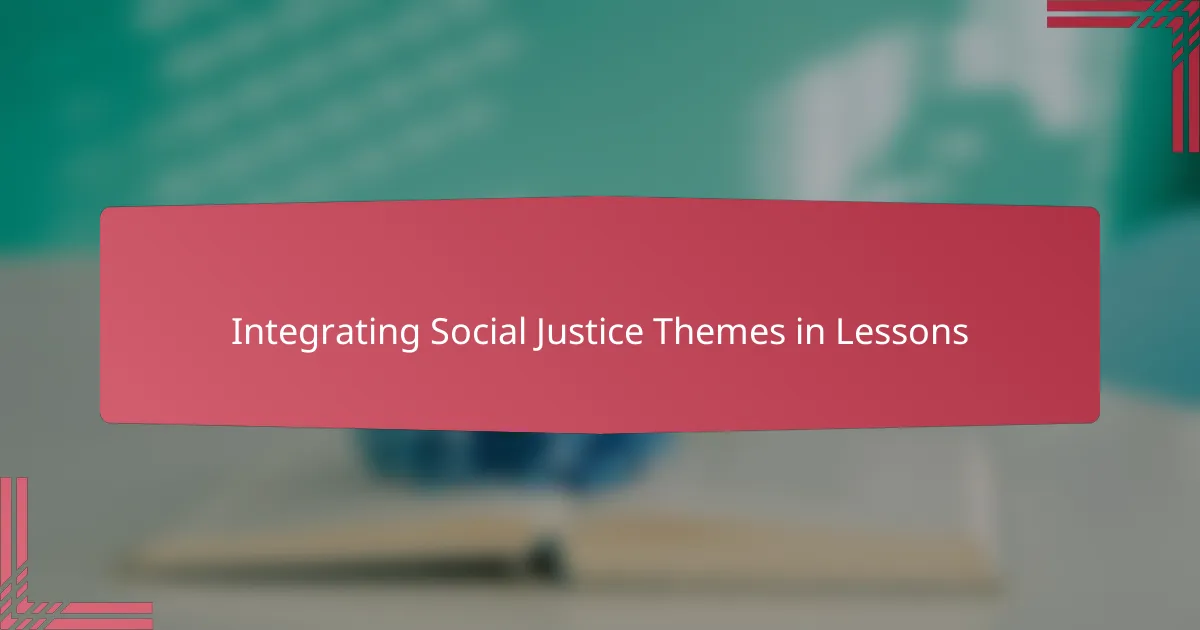
Integrating Social Justice Themes in Lessons
Integrating social justice themes into lessons requires intentional planning to move beyond surface-level discussions. I found that starting with questions that challenge students’ assumptions creates a space for deeper reflection. For example, when I introduced a unit on equity, I asked, “Who gets to decide what’s fair?” and watched as the room filled with thoughtful silence and then bold ideas.
One strategy that really worked for me was weaving social justice topics into existing curriculum rather than treating them as separate. When teaching literature, I linked characters’ struggles to contemporary issues, which helped students see history’s impact on their own lives. It’s satisfying to see students make those connections themselves—it’s like they’re building bridges between past and present.
But I have to admit, integrating these themes isn’t always smooth sailing. Sometimes, emotions run high or resistance pops up, and I ask myself how to keep the conversation productive without shutting anyone down. In those moments, reminding myself that discomfort can be a sign of learning makes all the difference. Have you experienced this tension in your classroom? I believe leaning into it with patience opens the door to real growth.
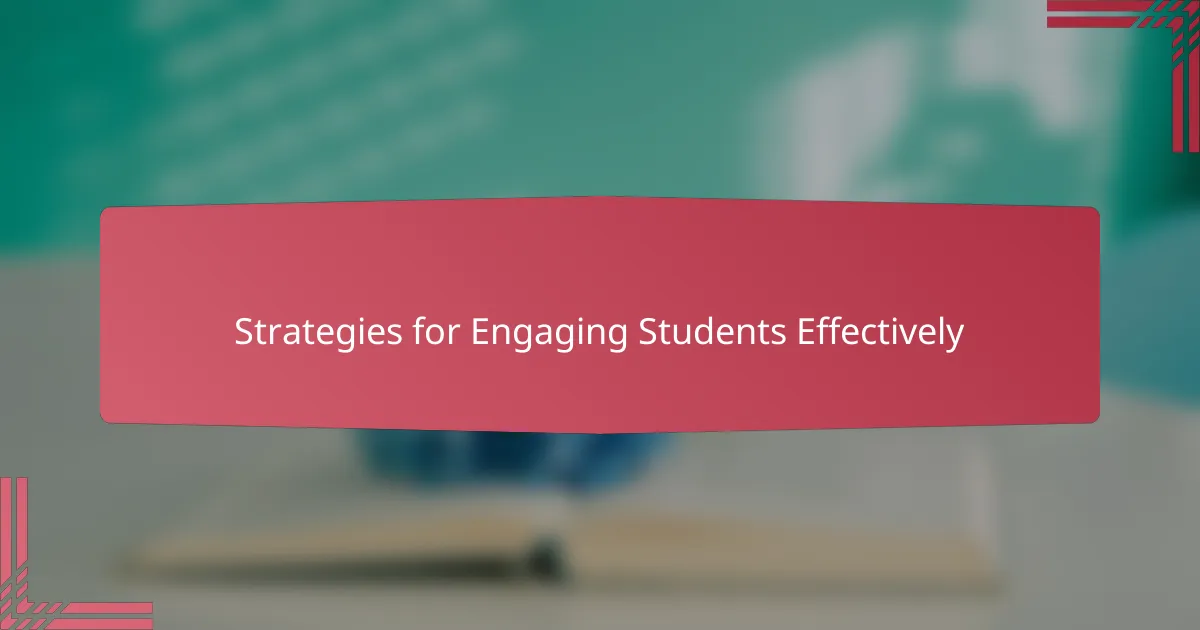
Strategies for Engaging Students Effectively
One strategy that has genuinely helped me engage students is starting with questions that invite personal reflection. I once asked my class, “Can you think of a time you felt treated unfairly?” and the flood of responses created an immediate connection to social justice themes. It’s that moment of personal investment that shifts learning from abstract to deeply real.
I also make it a point to vary how I present materials—sometimes through music, art, or even role-playing scenarios. When students step into someone else’s shoes, empathy moves beyond words. Have you noticed how engagement spikes when students actively experience an issue rather than just hearing about it?
At times, sustaining engagement means embracing discomfort together. I recall a heated debate where emotions ran high, but by setting clear guidelines and encouraging respectful listening, the conversation turned into a powerful learning moment. Isn’t it worth enduring some tension if it leads to real understanding? For me, that delicate balance is key to meaningful social justice education.
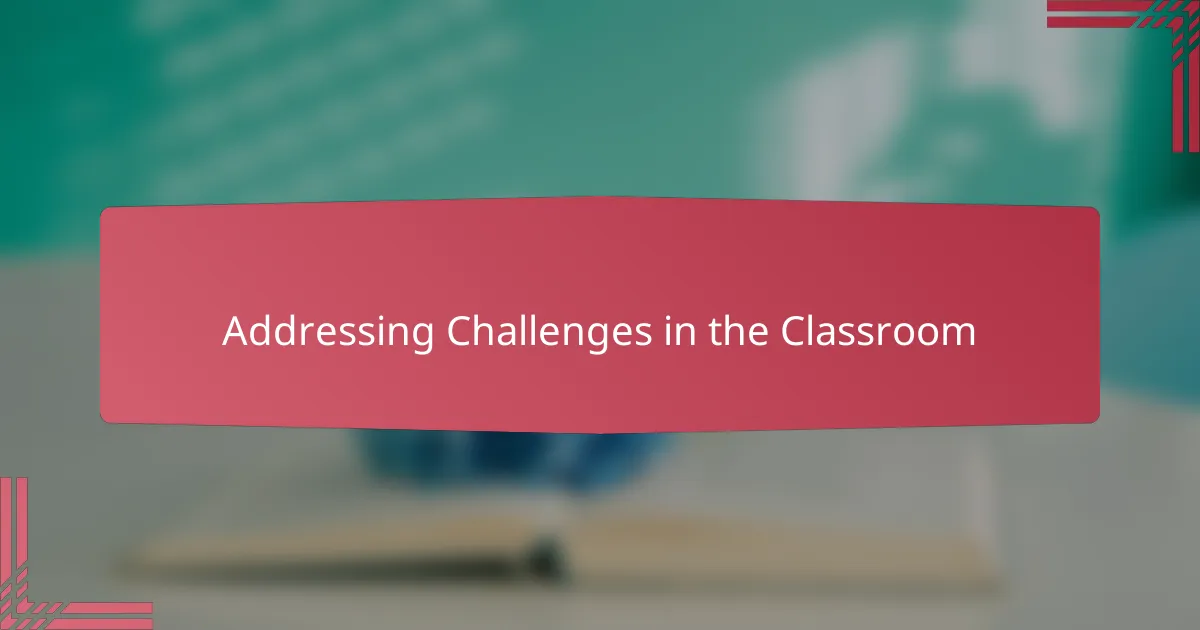
Addressing Challenges in the Classroom
Navigating the challenges that arise when teaching social justice is never straightforward. I recall a class where tensions flared after a controversial topic was raised; it was uncomfortable, but I learned that setting clear expectations and allowing space for honest dialogue helped students move past defensiveness. Have you ever noticed how sometimes the hardest conversations are the ones that teach us the most?
Resistance, whether subtle or overt, can often feel discouraging. I’ve found that acknowledging discomfort openly—both mine and the students’—creates an environment where vulnerability becomes acceptable. When I admit that I don’t have all the answers, it actually invites students to collaborate in the learning process, transforming frustration into curiosity.
One important lesson I’ve learned is to remain adaptable. Some days, a planned lesson gets derailed by unexpected emotional responses, and I have to shift gears quickly. In those moments, I remind myself that addressing the emotional undercurrents is part of social justice teaching itself. Isn’t it fascinating how challenges in the classroom often reveal deeper layers of understanding?
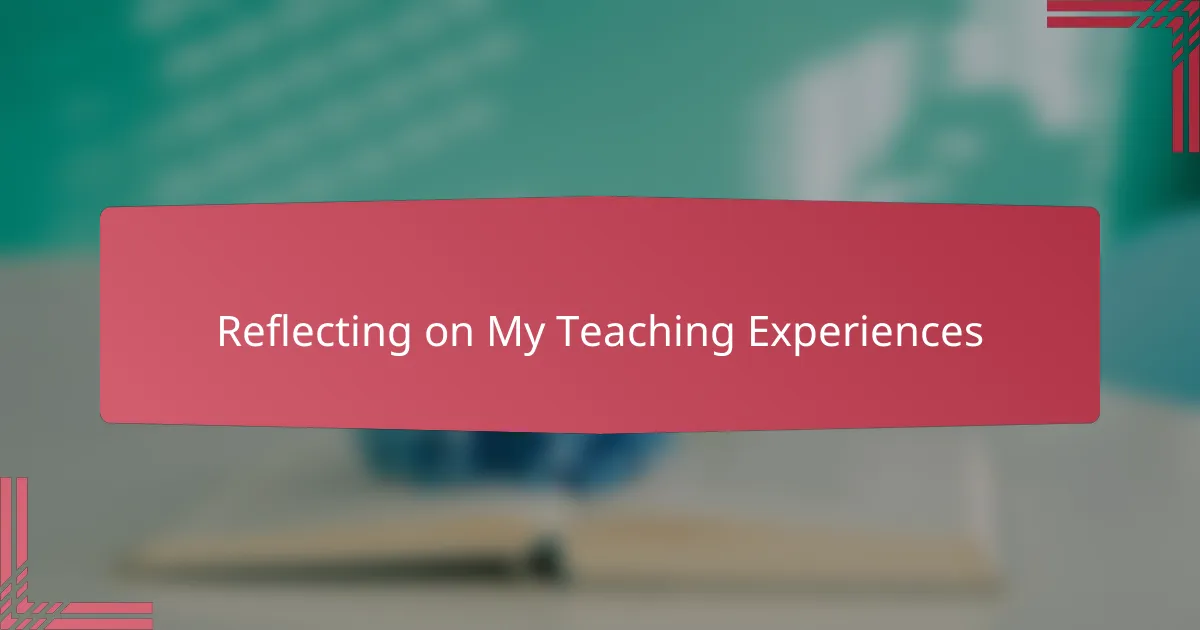
Reflecting on My Teaching Experiences
Looking back on my teaching journey, I realize how much each experience has deepened my understanding of social justice education. There was a time when I struggled to find the right words to address a sensitive topic, and in that struggle, I discovered the power of listening more than speaking. Have you ever felt that silence can sometimes teach louder than any lecture?
Sometimes, reflecting on those moments brings a mix of pride and humility. Proud that I witnessed growth in my students, yet humble enough to recognize how much I continue to learn alongside them. It’s like teaching is a dialogue, not a monologue, and that keeps me engaged and hopeful.
I often ask myself: how have these experiences shaped me as an activist educator? The truth is, every classroom encounter, whether challenging or uplifting, has reinforced my commitment to creating spaces where equity and empathy are more than abstract ideals—they become lived realities. Isn’t that the core of what we strive for?